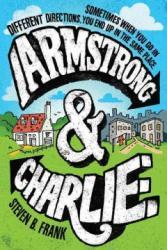
With race relations where they are today, it’s almost somewhat jarring to know that things haven’t changed much in over four decades. In an attempt to educate the next generation about racism, Steven B. Frank’s Armstrong and Charlie is an excellent start. While I would like to think that race relations have improved since the mid-1970’s, there are plenty of lessons available in this book that are applicable today. Still, racism can be a two-way street, and I couldn’t help but think of the Avenue Q song, “Everyone’s a Little Bit Racist.”
Beyond the obvious racial undertones to this book, Armstrong and Charlie is a fantastic book about growing up. Aimed at kids on the cusp of growing into adults, the book masterfully represents moments of peer pressure where the characters have to decide what the correct response should be. Not only does it have valuable lessons about lying, stealing, bullying, and grieving, but it includes a few moments of romance as well. As boys progress into their teenage years, these moments are sweet, but also emphasize the whirlwind of emotions and hormones about to befall all kids of that age.
The best part of Armstrong and Charlie is how the narrative splits between the two, titular boys. With the reader knowing the background of each individual, the reasons behind the biases and social friction come to light well before the boys realize that people are deeper than they appear on the surface. Somebody might be poor and act out in spite of it. Others might have family or personal problems that they’re hiding via and underneath a mask of toughness. Once we finally get to know someone, we find they’re not nearly as different as we once thought.
A fantastic book about 1970’s race relations that everyone should read, I give Armstrong and Charlie 5.0 stars out of 5.
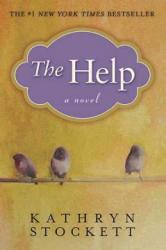
The Help, by Kathryn Stockett, is a novel that takes place in the early 1960's in Jackson, Mississippi where racism is strong. The story goes between the perspectives of three different women who are all going through differing struggles. Aibileen is a black maid working for a white family, one of many families she has worked for. She is trying to cope with the her 24-year-old son’s death. Minny is also a black maid and a good friend of Aibileen.
Minny is searching for yet another job because she can not keep her mouth shut and says whatever she wishes to her white boss. She also fails to protect herself from her husband, Leroy, who beats her often as a result of his drinking. Eugenia “Skeeter” (as everyone calls her) has just returned from college at the University of Mississippi. She longs to write for a newspaper company in New York City, but she is stuck on her parent’s cotton farm where her mother is constantly bugging her about finding a man. Skeeter applies for a job at Harper & Row but is declined the job. However, Elaine Stein, an editor from Harper & Row, offers some advice to Skeeter. Skeeter is left to find a job in Jackson. She finds a job for the local newspaper, writing for the housekeeping column. Skeeter has never had to housekeep in her whole life, though. Consequently, Skeeter goes to the aid of Aibileen, who is the maid of her close friend Elizabeth. Aibileen cautiously answers Skeeter’s questions hoping that her boss, Elizabeth, will not become angry with her. Meanwhile, Skeeter ponders day and night about a topic she could write about. Finally, Skeeter comes up with an idea. She requests Aibileen’s assistance in writing about the black maids, known as the help.
After much consideration and reluctance, Aibileen agrees. Aibileen, Skeeter, and Minny come together as a team to form the book that can change their lives forever. Together they create this book despite the many risks because of racism that they face.
I loved The Help and recommend to anyone who is searching for a funny and touching novel. The book also provides some information and background on the racism during the 1960's as the Civil Rights Movement unraveled. The book will keep you interested and wanting more. I felt I was constantly picking up the book and reading and was always rooting for the three main characters. I enjoyed receiving the story from the perspectives of Aibileen, Skeeter, and Minny. I felt that the whole story was intriguing. I found nothing dull and have no negative comments or complaints. The Help is a good quality story that will keep you delighted and engrossed.
Reviewer Grade: 9
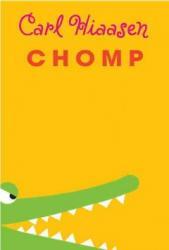
Chomp, written by Carl Hiaasen, was a great book that I read this year. The book was about how a boy named Wahoo, who has anything but normal life. His father keeps many wild animals in their own backyard- including an alligator and large snakes. When his father gets injured by an animal falling on his head, and Wahoo's mother goes to China, he is left to take care of all the animals and his father. One day, he and his father get a phone call from a television show that wants to use their animals for their nature show. Wahoo and his father end up saying yes, and they meet the star of the show. It didn't turn out as well as expected, because the star of the show is very confident in himself, and very selfish and rude. When he tries to film for his show, the alligator ends up getting very angry at him, and starts fighting with him. He ends up surviving, but since he saw the video, he thinks he can do anything crazy with animals. I really enjoyed reading this book because it was unpredictable, funny, and interesting to read.
Reviewer grade: 8
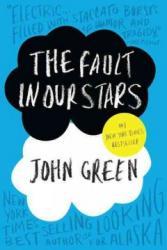
The Fault in Our Stars, written by John Green, is a very good novel that I have read this year. The main character in the book, is named Hazel Lancaster. Hazel has had a lung cancer that left her to have to use an oxygen tank every day. She thinks that she has a boring life, because she reads her favorite book over and over again, she stays at home every day, besides going to the support group for other people similar to her who have had cancer before. When she goes to this support group one day, she meets someone names Augustus Waters, and they become friends. He was at the support group because he had osteosarcoma and lost a leg. She tells him the favorite book she reads every day, and he decides to read it and, and ends up loving it.
Augustus surprises Hazel, and tells her that he hasn't used his "wish" yet- what cancer patients get when they may not live much longer. He told Hazel that he wants to go to Amsterdam and meet the author of Hazel's favorite author together. After a long time with doctors deciding if it is okay and safe if they can go, they finally are able to go to Amsterdam. This book was not predictable, and I enjoyed reading it a lot. The book had lots of parts in it that were funny, and sad. This book is one of the best ones I have read this year.
Reviewer grade: 8

The Scorch Trials, the second book in The Maze Runner series, was very good. I enjoyed the book because it was very interesting, and the book had lots that surprised me. This book is about when Thomas and his friends, or the "gladers," finally find a way to escape the maze, and are led to a place they can sleep in, eat, and relax. The gladers are shocked when, just a while later, they are locked in and can not get out. A strange man arrives a couple days later when they are confused, hungry and have no idea what is going on. The man tells the gladers that they need to go through phase two of something called the Trials. This part of the Trials is when they are forced to walk across a scorching hot desert, with people called "cranks" who are people who have an illness that makes them go crazy. The gladers were all threatened that they have the virus, and they would get the cure when they finish. All of the gladers decided to go, because if they didn't, someone would execute them. The story is told by Thomas's point of view, and what happens to him while he is completing phase two of the Trials. This book wasn't predictable to me, and it definitely surprised me with some things happening in it.
Reviewer grade: 8
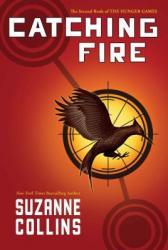
"Catching Fire" by Suzanne Collins, the sequel to her ever-popular "Hunger Games" novel, certainly bears a heavy burden of doubling-up on the success of her last installment. When I first began reading the novel, I dreaded that my interest in the story might slip away from me. However, as I continued to read, every turn of the page seemed more enjoyable than the last; and eventually, it became clear to me that Collins has done a phenomenal job with sustaining readers' attention and transitioning the story into a new narrative.
When readers left off in the last novel, Katniss and Peeta, in unison, emerged victorious as the winners of the 74th annual Hunger Games. As Katniss returns to district 12 though, she struggles with accepting the realization that her life will never be the same. Her feelings of dread culminate when she shares a conversation with President Snow, who threatens the life of her family if Katniss does not abide by his orders.
Snow, and other leaders in the Capitol, have seen Katniss' acts as rebellious, and will do whatever it takes to suppress uprisings. Namely, they devise a plan to host a special for the 75th hunger games, composed of the victors of previous rounds. This puts Katniss in a convenient position for the Capitol leaders, as she is the only female tribute to have ever won from district 12.
Katniss, Peeta, and the district 12 mentors find out about this news during their victory tour, in which Katniss is paraded over Panem and forced to keep peace amongst the districts. Helpless, Katniss and Peeta eventually come to accept the reality of their situation and prepare for the games. Under the council of Haymitch, they make allies with the other tributes, and as the story continues, their defiance manifests into a full-fledged rebellion.
I started reading this book immediately after the last and can say that I am pleasantly surprised with it. Collin's was able to meet the fans' expectations with this new novel, while also throwing in a number of unforeseen plot twists.
One complaint I might file with this novel is that the story parallels the first book in the trilogy too closely. At times while reading, the plot felt repeated, as if Collins' was reusing many of the same plot points from "The Hunger Games".
If you decide not to continue on with this next novel, I would pin my recommendation on "The Maze Runner". The story is similar to "The Hunger Games", but unique enough to engage your intrigue.
Overall, Catching Fire stands to be an excellent sequel to Collins' first book in the trilogy. While it's true that at times this book feels like a repeat of the last, I can say with near certainty that it will surprise you in ways you will not have expected. In the way that the first novel gave you a glimpse of Panem, Catching Fire truly immerses you in the story.
Grade 10

Originally written for his children, J.R.R. Tolkien's fantasy novel “The Hobbit” is hailed among book critics as a remarkable, introductory-level fantasy novel. It manages to engage readers with an epic and timeless plot, while also avoiding the use of profane language and violent scenes.
The tale is set in Middle Earth, home to a number of human-like species including the Hobbits, Dwarves, and Elves. Over the course of the novel, Tolkien provides a rich background of the history of these three species.
Namely, the majority of backstory is setup around the dwarves- who originally inhabited the “Lonely Mountain” and made their fortune off of mining gold. Their empire prospered until at last, a greedy, gold-seeking dragon named “Smog” wreaked havoc to their way of life.
Enter Bilbo Baggings, a middle-aged Hobbit settling down in the Shire. After he hosts a seemingly ordinary dinner party, his life is turned inside out, and the inner spirit of adventure is awakened with him. He joins in a quest to reclaim the dwarf home, and takes part in a number of adventures along the way.
I originally read this book after finishing the “Lord of the Rings” trilogy. While it’s true that this novel is aimed at a younger demographic, it is certainly still an engaging read for older teens and adults. J.R.R. Tolkien embeds a number of rich storytelling devices into his writing, and it makes the read an absolute pleasure!
If you decide not to try this novel, I would suggest reading “A Game of Thrones” by George R.R. Martin. It is certainly not as child-friendly, and has some pretty gruesome scenes, but Martin’s writing makes up for many of the imperfections of Tolkien’s work. Overall, The Hobbit is most aptly suited for readers aged 8-12, and serves as a great introductory novel to fantasy literature. For older readers, I might suggest a different read, but all the same, and in spite of your age demographic, The Hobbit is truly a timeless masterpiece of literature and is worth giving a try!
Reviewer Grade: 10
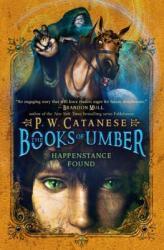
Happenstance doesn't know who he is or where he's from. When he's found in a cave by a team of explorers, he's whisked away into a world of magic and mystery, where he must come to terms with his elusive past and a strange new enemy. I couldn't put this book down. It was fun, adventurous, and surprising, with interesting characters and an engaging plot. I'd highly recommend to those who love fantasy and adventure stories.
Reviewer Grade 9
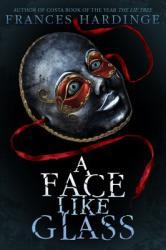
There's something wrong with Neverfell's face. In Caverna, where people live underground, people's facial expressions never change, unless they want them to. But Neverfell's face is horrifying, and so her caretaker Master Grandible, cheesemaker extraordinaire, makes her wear a mask at all times. Confined to Grandible's chambers, Neverfell gloms on to all visitors, until one day she meets a special visitor, escapes Grandible's corridors and truly starts to experience the horrors of Caverna - all of which are more terrible than her face.
First, this is not a horror book. I went into it thinking that it was (I mean, look at that cover - it's creepy!), and I think that expectation hampered my enjoyment of the read a bit.
By all rights, I should have loved this book. It has the ingredients of a book I would love: a strong(ish) female heroine, intricate worldbuilding, court intrigue, unreliable characters and a few fun twists. Unfortunately, I was never able to really connect with the characters, aside from Neverfell. Neverfell, and to a lesser extent her friend Zouelle, are the only characters to really get much development, and unfortunately, Neverfell spent most of the book annoying me. The first part of the book is also short on an overarching plot - I kept wondering where we were going (aside from, potentially, outside). Neverfell spends the middle 200 pages or so making silly, avoidable mistakes and almost getting herself or her friends killed. Which makes sense, given her sheltered upbringing, but it wasn't super fun to read, and despite a strong beginning, the middle of the book seemed to drag on. However, the last 100 pages or so, once our protagonist has a larger objective, were delightful. There's a reveal in the epilogue that I didn't see coming, and I loved it.
While the book wasn't perfect, the worldbuilding was amazing, and I definitely want to read author's other book, The Lie Tree (which apparently is horror), now. A very solid middle grade read. 3 stars - I liked it.

I really enjoyed this book because it was such an adventurous and suspenseful story: just my type. The main character in this story goes through so much I know I could never endure myself, but she kept pushing through it all and made it out all right. There were so many surprising things in this amazing book that happened that I never would have guessed.
Under A Painted Sky was probably the best book I've read this year. Like all books, it had a little blunder here and there, but overall I absolutely loved it.
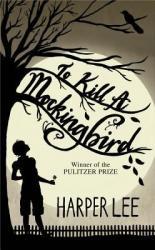
Although it was a little hard for me to get into this book, once I did I was hooked. This book is about Scout, a 7 year old girl who is dealing with the hardship of her father having to defend a black man of rape in the 1940's. Along the way, Scout and her brother Jem meet Dill and they spend their summers together. Dill wants to get Boo Radley to come out of his house, and in the end, he does. With this book is the message to put yourself into others shoes to see how they feel. A classic book, great for anyone.
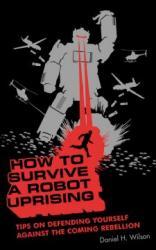
As a precursor to Robopocalypse , How to Survive a Robot Uprising: Tips on Defending Yourself Against the Coming Rebellion takes a humorous approach to educating the reader about the capabilities and limitations of today’s robots. Similar in style to Where's My Jetpack?: A Guide to the Amazing Science Fiction Future That Never Arrived , How to Survive a Robot Uprising uses the humor of preparing for the end of the world to poke fun at the limited possibility that we’d eventually be destroyed by the robots we use to make our lives comfortable today.
With my background in robotics (my Master’s Degree was in Mechanical Engineering with a focus on Robotics and Design), I quickly realized how Daniel H. Wilson was writing this “guide.” Robots are powerful and useful machines, many of which can perform actions much more efficiently and accurately than humans can, thus leading to our swift and inexorable demise.
However, by the same token, they also have limitations and challenges that we humans do not (or at least don’t consciously think about). These robotic challenges are primarily used “against” them in this hypothetical scenario, revealing that most robots aren’t as indestructible as we make them out to be in fiction.
My only qualms with this book were that it was too short (I love this tongue-in-cheek writing style) and that the structure seemed kind of “loose.” Sure, different sections went over such topics as types of robots, and what ways these robots could be incapacitated, but the flow felt a bit like “stream of consciousness” writing. Granted, many of the topics cross over into each other, so it can be difficult to box them into discrete and distinct sections. Still, the narrative seems to jump all over the place as a result. Perhaps this is why Wilson decided to eventually write Robopocalypse, to add the structure that was missing from this “pamphlet.”
A funny book that subtly educates the reader about robot strengths and weaknesses, I give How to Survive a Robot Uprising 4.0 stars out of 5.
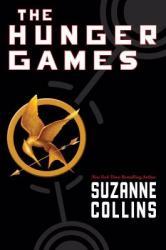
Ever since the release of Suzanne Collin's dystopian novel "The Hunger Games", her work has garnered international acclaim from some of the world's most reputable critics. Adopted into a series of wildly popular films and having been printed more than 23 million times, the staggering success of her novel begs the question, "Does The Hunger Games truly live up to its notoriety?" Well in fact, after having read it multiple times, I can personally say that it far exceeded my expectations.
After the ruin of North America and the collapse of democracy, an authoritarian government arises. In order to maintain oversight of its people, the capitol divides its dominions into twelve districts, each specializing in a different pursuit. Every year, the capitol hosts "The Hunger Games", in which a boy and girl from each district are randomly pooled into a survival competition. Participants must fight to the death in a futuristic arena, all the while being broadcasted live on TV.
Enter Katniss Everdeen, a 16-year-old teenager from the impoverish District 12. In an effort to protect her sister, she volunteers as a tribute to the game, but as she heads to the capital, she realizes that her life will never be the same. Through the course of the story, Katniss struggles to balance her conflicting emotions, and comes to understand the harsh reality of life in Panem.
As Katniss makes these revelations, the reader has the chance to pick up on a number of powerful themes, examples of which include the dangers of reality shows, the ever-growing obsession with fashion trends, and the consequences of desensitization to violence. Not only is this novel an action-packed and engaging read, but it also leads readers to share meaningful conversations about changing ideologies in the 21st century.
I picked up this read after watching the book-inspired film, and have been pleasantly surprised with it. While the movie makes fair and accurate adaptions to the story, it misses out on many of the themes presented in the books. For this reason, I would certainty recommend continuing on to read the novel after watching the movie, as there is plenty of unique content from the book. If you have not watched the movie, I would advise even stronger to pick up this read. For the reasons previously mentioned and more, I honestly am so glad to have read this book.
One complaint I might bring up is that while a large majority of book readers are young, the novel has some extremely gruesome scenes. If you are to read this book, be forewarned of violence. Furthermore, I found some passages difficult to read, due to the choppy-sentence structure used by Collins. This may just be a personal preference, but I felt that it was of detriment to the story.
Overall, "The Hunger Games" will certainty appeal to teens 13 and up and leave readers with discussion points about government, free-speech, sacrifice, moral desensitization, and other thought-provoking themes. It mixes an enthralling plot with rich and powerful messages- a formula bound for literary success.
Reviewer Grade 10
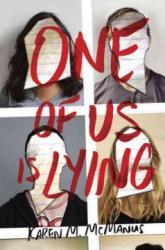
One of Us is Lying is like The Breakfast Club, as it it involves a bunch of "teen movie stereotypes", during an interesting detention. These include Bronwyn, the "brain", Nate, the "criminal", Addy, the "beauty", Cooper, the "athlete", and Simon, the "outcast". However, the similarities end there, as one of them, Simon, dies from a suspicious allergy attack during the detention. Simon was the creator of the gossip app known as "About That," which shared other students' secrets and gossip. He had been planning to post about the other four before his death, making them all suspects in his murder. Or is it all a frameup? The reader has to decide whether one of the incredibly likable four leads is a lying murderer, or if they're all victims.
This book was very addictive. McManus' writing was detailed, and she was able to distinguish the four's voices as their own. No one sounded or felt the same, and each of their narratives were equally enthralling. Each lead character is a deconstruction of the stereotype they're based off of, and in a way, this is a deconstruction of the mystery genre in general; unlike most, it's more character driven than plot driven.
My main complaint is that some of these students seem overly capable in a way. Not just the four, but the supporting character's talents are beyond most high schoolers. It may have made more sense if the setting was in college. However, this is something I see a lot of in YA fiction today, so it doesn't overly bother me, and it didn't lessen my enjoyment of the book.
I recommend this if you like mysteries and character driven stories where every character, both leading and supporting, are developed, fleshed out characters.
Reviewer Grade: 12
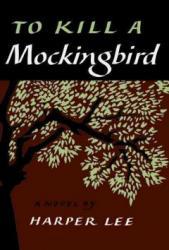
The novel “To Kill a Mockingbird,” by Harper Lee may strike your perception as a seemingly uninteresting story. The book tells the tale of two young children in a sleepy Alabama town, and at face-value, the plot does not garner much intrigue. However, I was in the same situation when I was required to read this book in the spring of my freshman year at high school.
Indeed, while at first the story seemed boring, as I continued to carry on with reading, every turn of the page immersed me ever further into Lee’s timeless story.
As a reader, you share the emotions felt by Jem and Scout, two young siblings, as they learn the nuances of life in the prejudiced American South during the early 1900s. Not only was their community weakened by the economic collapse of the Great Depression, but also sickened by the bitter contempt felt among whites and blacks.
In the beginning of the novel, Jean Louise “Scout” Finch and her brother Jem innocently play games with their friend “Dill” and enjoy life in Maycomb with their father, Atticus. During this time, they have little to no apprehension of the racial tension hanging in their society, but when their father, Atticus Finch, who works as lawyer, openly chooses to defend an African American in court, trouble arises.
Jem and Scout undergo a number of personal developments during the course of the novel. While at first, they carry with them a genuine and child-like innocence, the court trial their father has taken on exposes them to the racist indignity felt by their fellow community members. Jem and Scout struggle to balance their conflict between the social norms of Maycomb and the morals their father has instilled in them. With the trial’s end, Jem and Scout are lead to discover the imperfections of their society, and the ways with which they are forced to deal with them. As the reader follows along, they not only watch Jem and Scout change, but they too themselves are shaped through Lee’s captivating story.
Overall, I enjoyed most aspects of the book. Although some scenes I felt were a bit plain and unprogressive, these minor flaws were overshadowed by the powerful themes Lee expresses through the story. If you haven’t already read To Kill a Mockingbird, I would certainly give the novel a try. If not for the genuine enjoyment of reading the story, try this novel to feel the powerful emotions stirred from Lee’s literary masterpiece.
Reviewer Grade: 10
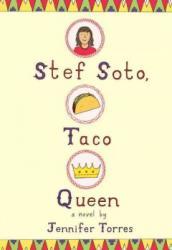
I love Stef's unique point of view and how her dad named their truck "Tia Perla". It taught me a little bit more Spanish, and I love the out-of-the-ordinary sort of feel with the different culture. I would say it was definitely one of the best books I've read.
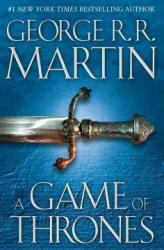
“A Game of Thrones” by George R.R. Martin tells the tale of various clashing households and their quest to conquer control over the seven kingdoms. Set in a distant, but vaguely familiar medieval-Europe, the story bears parallels to England’s “War of the Roses,” while also introducing its share of unique fantasy elements. As the reader progresses through the book, they follow the politics of the Iron Throne- a metaphor representing the complete and utter control a King possesses in a feudal government system. Furthermore, the reader tracks 8 character perspectives, which are alternated through passing chapters.
As the King rides north to Winterfell to meet with his trusted vassal, and friend, Eddard "Ned" Stark, he strikes up an agreement to anoint Eddard as the hand of the king. Reluctant, Ned follows the King back to the South, but as the plot continues to unfold, Eddard learns of a secret unbeknownst to the King and some of his most trusted advisers. With the death of the King and the ruin of Eddard’s house, war rages in Westeros- as several characters attempt to strike their claims on the Iron Throne.
I initially picked this book up after finishing J.R.R Tolkien’s, “Lord of the Rings” series and have been pleasantly surprised with it. Many fantasy readers have speculated that the literary masterpiece of Tolkien’s novels could not be out done, but I am now inclined to disagree. I thought the book was well-crafted and engaging as an intermediate to advanced reader. However, I would file the complaint that the book moves a bit slow for my taste. Some may lose interest in its plot, especially considering the sheer volume of the book series. The old-language also adds to this effect, as it may cause some readers to struggle following along.
Overall, I would say that this book is certainly worth a try for someone who enjoys medieval-fantasy novels. Admittedly, it will take a while to read and is certainly no small undertaking, but by sticking with it, I found myself enjoying every page more than the last!
Grade 10
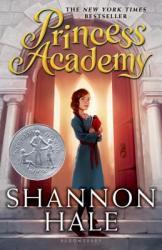
In Princess Academy, Miri, a girl from Mount Eskel, competes in a mandatory royal preparation academy. Her life completely changes when she starts to smell danger. Indeed, her once-small town is now the target of disaster. She must team up with her fierce competitors from the academy to save their own lives, the academy, and the lives of everyone on Mount Eskel.
This book is nothing if not charming. I loved the characters, and the plot was well-developed. The setting was perfect for the events that transpire, and I would strongly recommend this book, as it is a great light read.
Reviewer Grade: 11
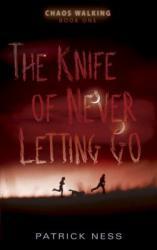
What a fabulous beginning to a fabulous series. Todd, the 13-year-old main character, has lived in Prentisstown all his life, but he soon discovers he knows nothing about the city at all. In fact, his whole life has been a lie.
As Todd and his dog, Manchee, run from the dangerous truth, more and more of Todd's presumptions about the New World are busted. This book is gripping, enticing, and heartbreaking all at once. I adore all the characters, and after having read the entire trilogy, I feel as if I know the characters like siblings.
However, there is one problem for me with this book. One of the antagonists is extremely exaggerated, to a point that it almost seems goofy. This interrupts the heroic and innocent tone. Despite this, I would absolutely recommend this book; you will be immediately sucked in to Patrick Ness's world.
Reviewer Grade: 11
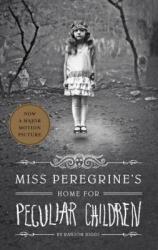
Miss Peregrine's Home for Peculiar children focuses in on a teenager trying to uncover the mysteries of his grandfather's life. Common sense makes Jacob want to believe that though his grandfather's experiences were horrible and gruesome, they were in no way magical, or 'peculiar.' However, a series of mystical photographs and eerie stories from his grandfather convince him that there was something strange about his life after all. This book, with a tone reminiscent of Harry Potter, takes us on Jacob's adventure to find out the truth. It is fascinating, intriguing, and makes the reader fall instantly in love with all of the characters. This was a very fun read.
The one thing I did not like about this book was how unrealistic it is.
However, this is very much personal preference. It tilts slightly towards fantasy, a genre with which I am very picky. Nonetheless, I thought it was very well-written, and I will most likely read the following books after having read this one.
Reviewer Grade: 11





 We are experiencing an outage to the online catalog. We're working to resolve the issue soon. The PPLD mobile app and Libby/OverDrive should still function normally.
We are experiencing an outage to the online catalog. We're working to resolve the issue soon. The PPLD mobile app and Libby/OverDrive should still function normally.